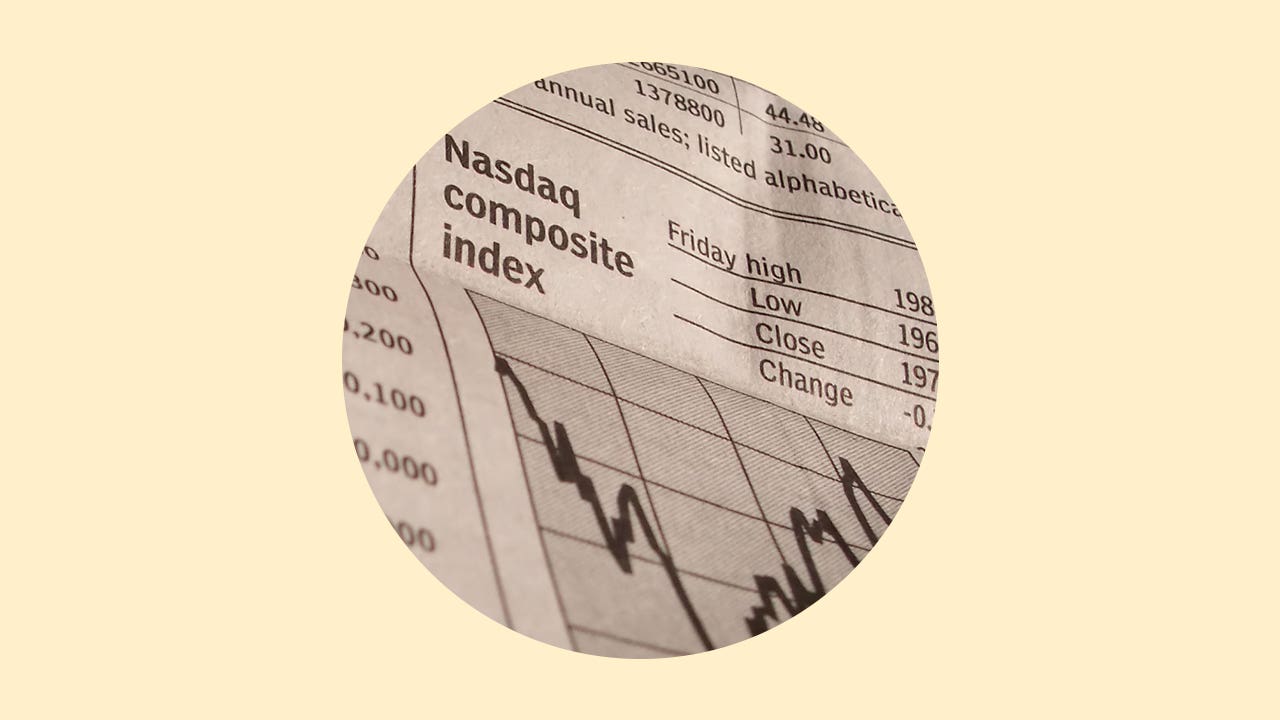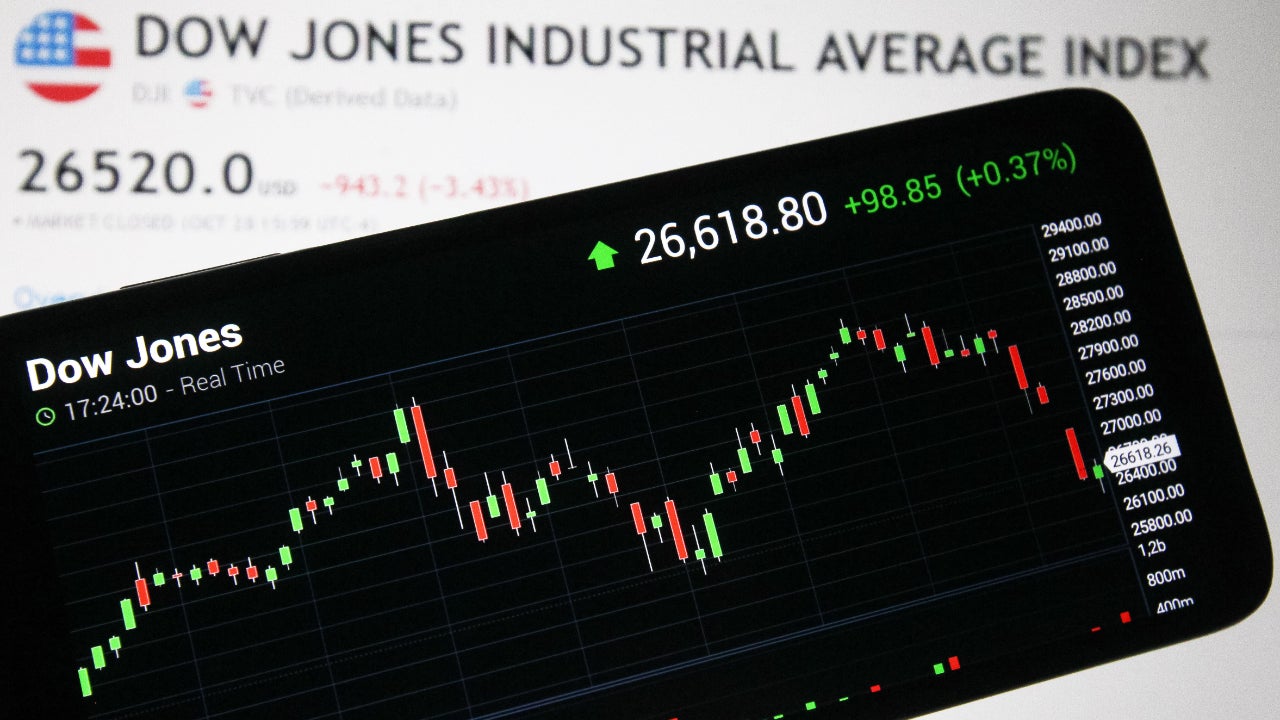What is the Nasdaq Composite?

The Nasdaq Composite is an often-cited stock market index — along with the S&P 500 and the Dow Jones Industrial Average — known for its large number of technology-related companies. Here’s what investors should know about the Nasdaq Composite.
Key takeaways
- The Nasdaq Composite is an index that measures the performance of more than 3,000 securities, all listed on the Nasdaq stock market.
- Nasdaq was originally an acronym for “National Association of Securities Dealers Automated Quotations.”
- A smaller index, the Nasdaq 100, measures the performance of the 100 largest non-financial companies listed on the Nasdaq exchange based on market capitalization.
What types of companies are in the Nasdaq Composite Index?
The Nasdaq Composite is best known for its large number of technology-related components. As of January 2025, about 60 percent of the index was made up of companies from the tech industry, with well-known names like Nvidia, Apple, Microsoft, Amazon and Google near the top of the list. There are, however, other industries included in the index such as consumer discretionary, which accounts for about 19 percent of the index, and healthcare, which makes up about 6 percent. Even some financial companies are included, such as investment management company T. Rowe Price.
Top 10 stocks that make up the Nasdaq Composite
Below are the 10 largest components of the index and their total weighting:
- Apple (AAPL): 12.05 percent
- Nvidia (NVDA): 10.47 percent
- Microsoft (MSFT): 9.98 percent
- Amazon (AMZN): 7.34 percent
- Tesla (TSLA): 4.13 percent
- Meta Platforms (META): 4.06 percent
- Alphabet Class A (GOOGL): 3.52 percent
- Broadcom (AVGO): 3.45 percent
- Alphabet Class C (GOOG): 3.35 percent
- Costco Wholesale (COST): 1.29 percent
Note: Data as of Dec. 31, 2024.
What does the Nasdaq Composite measure?
The Nasdaq Composite measures the stock performance of the constituents in the index, which all come from companies listed on the Nasdaq Stock Market. The index is market-cap weighted, which means that companies are weighted in the index based on the value of their outstanding shares. These weightings will change based on the performance of the companies’ share prices. Apple was the most valuable company in the world at the end of 2024 with a market capitalization around $3.4 trillion, and it accounts for roughly 12 percent of the Nasdaq Composite.
The index may also be used by investment managers as a benchmark to measure their funds’ performance against. Funds that focus on the tech industry may use the Nasdaq Composite as a way to compare their relative performance.
How to invest in the Nasdaq Composite Index
Though you can’t invest directly in the Nasdaq Composite index, you can invest in mutual funds and ETFs that aim to track the performance of the index, usually for very low costs. The Fidelity Nasdaq Composite Index ETF (ONEQ), for example, aims to track the index’s performance and comes with an expense ratio of 0.21 percent.
One of the most popular technology-related ETFs is the Invesco QQQ Trust (QQQ), which tracks the performance of the Nasdaq 100 and comes with a 0.20 percent expense ratio. These ETFs and others can easily be purchased through an online stock broker.
How does a company get included in the Nasdaq Composite?
To be included in the Nasdaq Composite Index, a company’s U.S. listing must be exclusive to the Nasdaq Stock Market, unless the security was dually listed on another U.S. exchange prior to 2004 and has continuously maintained that listing. Common stocks, ordinary shares, ADRs, shares of beneficial interest or limited partnership interests and tracking stocks are all securities that can be included in the index.
Closed-end funds, convertible debentures, exchange traded funds, preferred stocks, rights, warrants, units and other derivative securities are not eligible for inclusion in the Nasdaq Composite.
Is the Nasdaq Composite overvalued?
The Nasdaq Composite includes a number of companies that are on the cutting edge of technology and innovation, and seem well-positioned to grow significantly over time. But this optimism about the future can occasionally cause companies in the index to appreciate beyond their intrinsic value, or what the company is worth based on its future business performance.
In the late 1990s and early 2000s, the Nasdaq found itself in a bubble driven by wild optimism for technology companies and anything tied to the budding internet. After reaching a high in March 2000, the Nasdaq tumbled nearly 80 percent to a low of 1,139.90 in October 2002 and didn’t regain its prior peak for 15 years.
More recently, the Nasdaq has seen strong performance driven by the boom in artificial intelligence spending, with many companies seeing their stocks soar on the back of AI optimism. The Nasdaq jumped 43 percent in 2023 and another 29 percent in 2024. Time will tell whether the underlying businesses can generate enough cash to justify their lofty valuations.
Frequently asked questions
Bottom line
The Nasdaq Composite index tracks more than 3,000 companies that are listed on the Nasdaq Stock Market and is heavily weighted toward the technology industry. Investors looking to participate in the potential growth of these companies can purchase ETFs or mutual funds that track the index.
Editorial Disclaimer: All investors are advised to conduct their own independent research into investment strategies before making an investment decision. In addition, investors are advised that past investment product performance is no guarantee of future price appreciation.





